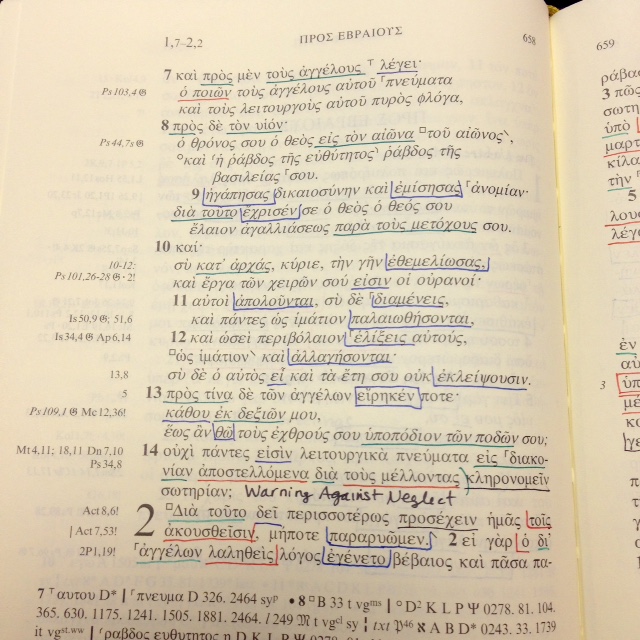
What if you could have a Greek NT that was marked to help you visually identify verbal aspect? This is a copy of my copy of NA28 and you will see that it is marked with various shapes and colors. Keep in mind that the system I present here is subjective. I use both color and shape codes to mark just the verbals. Prepositional phrases are underlined in green.
I use blue, black and red ink markers to designate the various verbal parts of speech:
1. Indicatives, subjunctives, and imperatives are marked with blue.
2. Infinitives are marked with black.
3. Participles are marked with red.
And I use specific shapes to highlight the verbal aspect of the tense forms (these apply to all above verbal parts of speech):
1. Presents are simply underlined, noting their continuous aspect (think of a straight line going on continuously).
2. Imperfects are underlined and have a single vertical line at the end of the word, visualizing the continuous action in the past aspect of the imperfect.
3. Futures are just the converse of the imperfect; the future has an underline but a single vertical line at the beginning of the word, visualizing the open-ended view of the speaker/writer as they look to the future.
4. Aorists are underlined and then given small horizontal lines on each side of the word (this forms a large ‘U’-shape around the word, highlighting the undefined aspect).
5. Perfects are boxed, lines all the way around the word, emphasizing its heightened character, completed action and complexity in the view of the speaker/writer.
So, a present verb has a blue underline. An aorist participle has red lines underneath and on both sides. A perfect infinitive has a black box around it. By consistently incorporating a system like this, you will be able to visually identify how speakers/authors employ the various verbal parts of speech and tense forms. Such an aid for quick reading and exegesis!